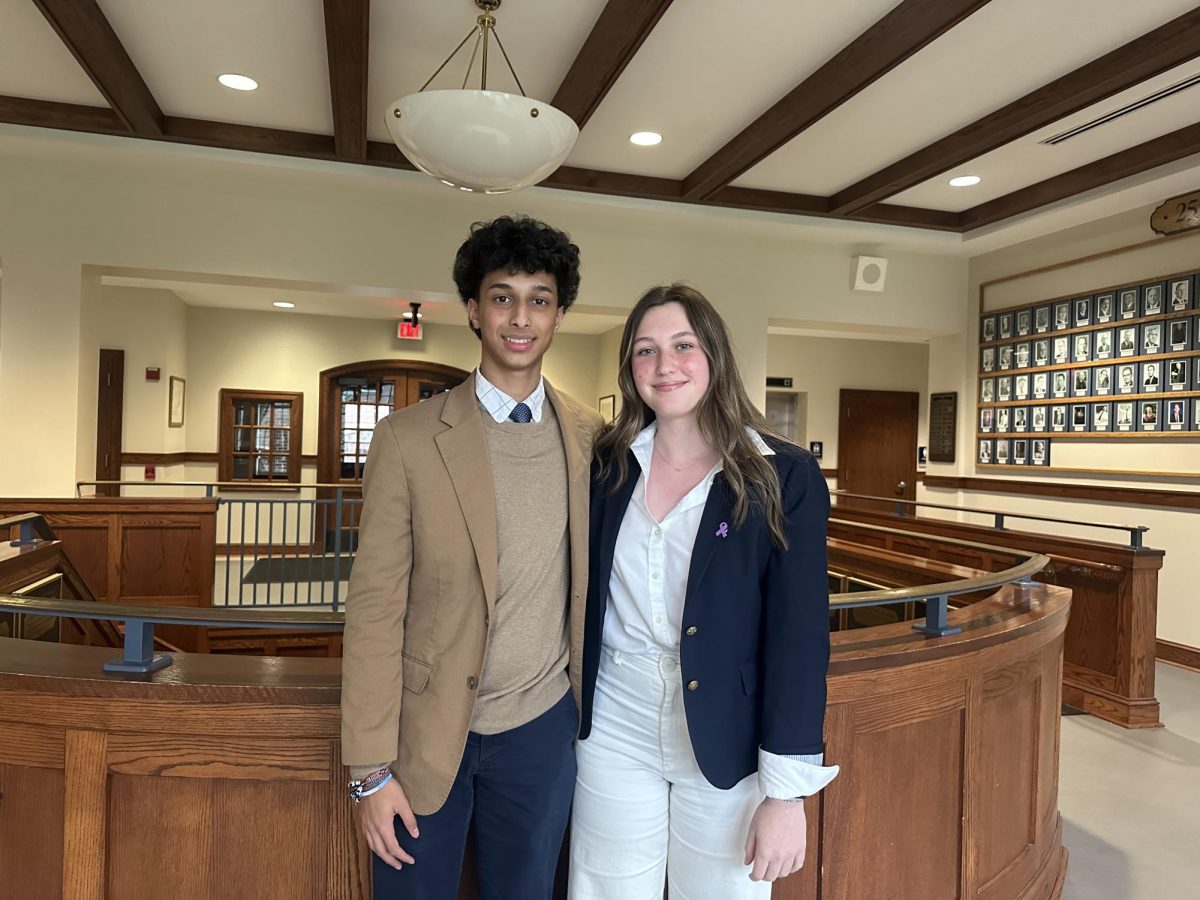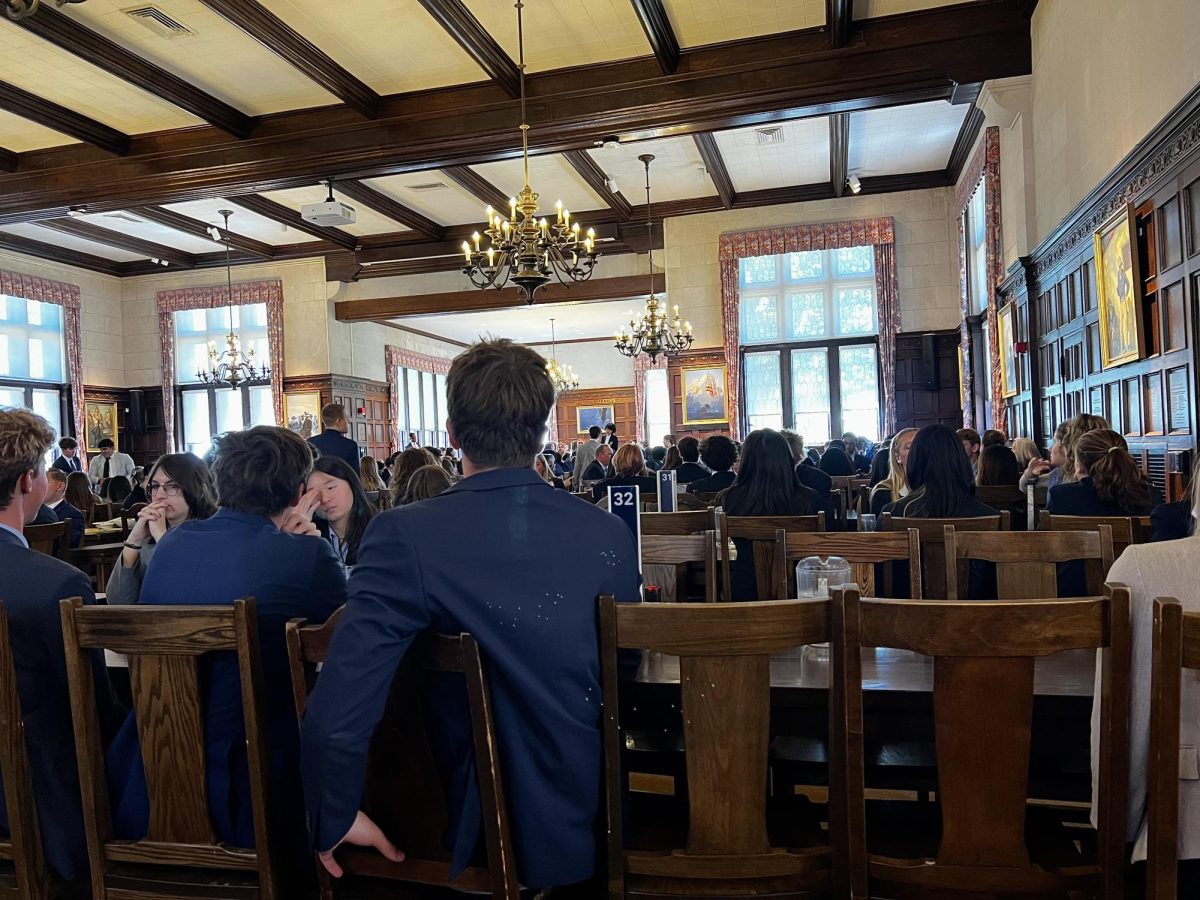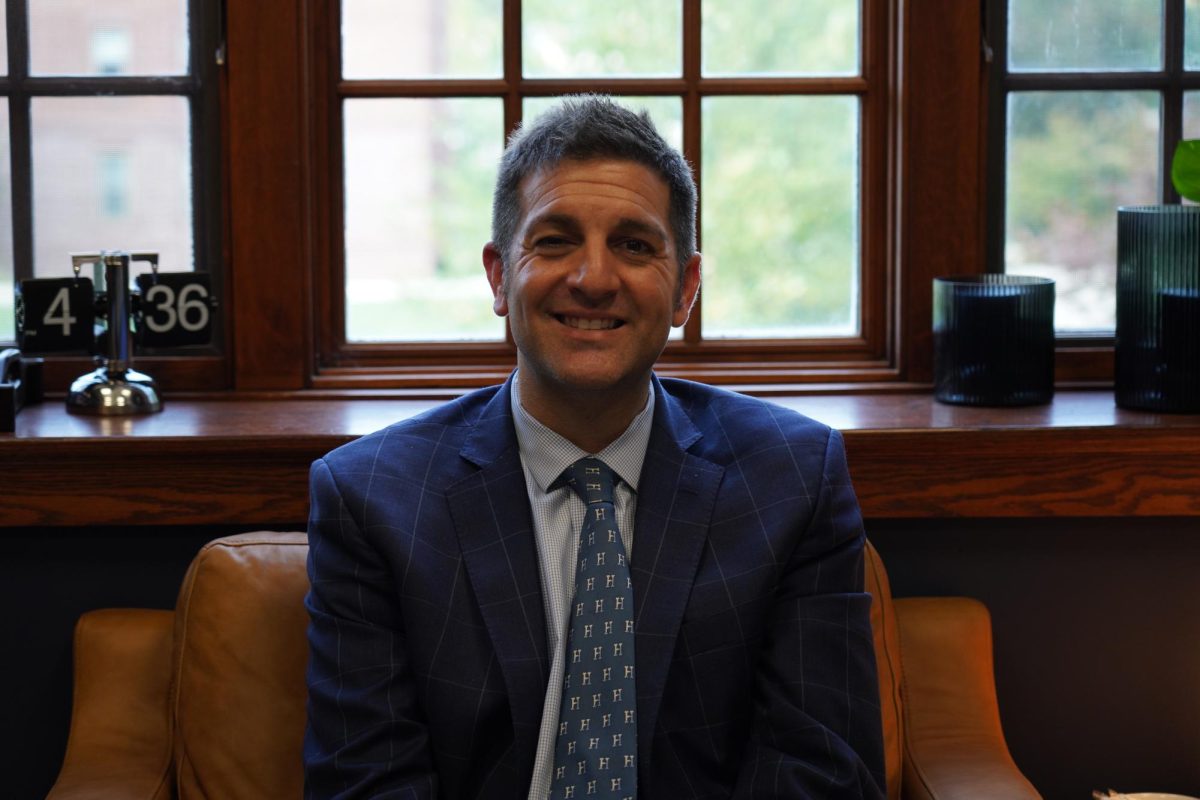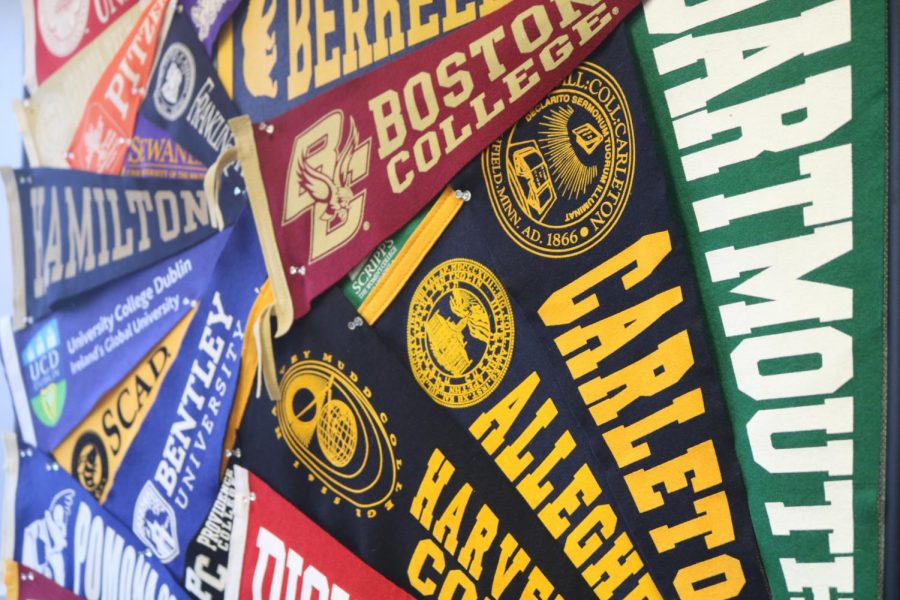Legacy and donor admissions should be banned
Media: Sarah Wisneski
The collection of college flags pinned at the College Counseling Office
On Feb. 2, Rep. Jamaal Bowman (D-N.Y.) and Sen. Jeff Merkley (D-Ore.) introduced the Fair College Admissions for Students Act, which entails a removal of the use of legacy and donor admissions policies in higher education. Proposed soon after the Supreme Court decided to hear a pair of affirmative action cases that would transform the consideration of racial diversity in the admissions process, the bill argued that legacy and donor policies not only perpetuate but also exacerbate racial and socioeconomic inequities. Although specific details of the bill remain contested, the idea behind it stands strong: legacy and donor admissions should be banned.
Originally, these policies were designed to gatekeep elite universities from an influx of Jewish applicants in the 1920s. Antisemitism and antiimigration sentiments ran deep in the country’s education back then, especially at the “Big Three”: Harvard, Yale, and Princeton. Harvard’s then-president, Abbott Lawrence Lowell, was adamantly antisemitic and worked to restrict the number of Jewish students on campus. Before, these universities admitted students based mainly on merit and academic requirements, however, it was clear that if that policy had continued, there would be an “undesirable” number of minorities, particularly those who are Jewish. A new system was proposed that categorically rejected the idea of meritocracy and hailed a new approach, a “holistic” one that theoretically would be more beneficial for all applicants, rich or poor, but in reality gave the colleges the freedom to admit the children of major donors and family name legacies, fulfilling institutional needs.
Fast forward to 2011: a study conducted by a Harvard researcher on 30 elite U.S. colleges has shown that all legacy applicants had a 23% higher probability of admission, while primary legacy applicants (those with a parent who attended the school as an undergraduate rather than a grandparent or aunt) had a 45% higher probability of admission. Rather than questioning whether legacy applicants are more or less “qualified” than others (which, on paper can be heavily influenced by their parents’ education level), the moral problem with this policy is that “it’s a preference that advantages the already advantaged,” says Richard D. Kahlenberg of the Century Foundation.
There are two clear legal challenges to legacy and donor preferences in the admissions process. For public universities, these policies are unconstitutional under the equal protection clause of the 14th amendment, which mandates that individuals in similar situations, such as applicants applying to college, be treated equally by the law. It is clear that legacy admissions, by valuing an aspect of the application that no applicant can control (to whom they were born), violate the equal protection clause. For private universities, the argument is perhaps more nuanced. It can be traced back to the Civil Rights Act of 1866, which, according to contemporary Supreme Court decisions, particularly in Shaare Tefila Congregation v. CobbJews (1987), prohibits “discrimination [against members of protected groups] solely because of their ancestry or ethnic characteristics.” Although one could contend that legacy admissions overwhelmingly benefit White applicants in the process, hence the “ethnic” piece of the analysis, the stronger legal argument is on ancestry. In Saint Francis College v. Al-Khazraji, the Court opined that “an American born in Iraq could claim that he was unlawfully discriminate against if he was ‘subjected to intentional discrimination based on the fact that he was born an Arab, rather than solely on the place or nation of his origin, or his religion.’”Therefore, this extension of the equal protection clause by the Civil Rights Act of 1866 supports the legal challenge against private institutions in addition to public ones.
A common counter argument claims that legacy and donor admissions benefit low-income students as the policy would facilitate scholarship giving by wealthier families. Admittedly, the argument seems somewhat cogent. However, just as with the argument between taxes and philanthropy, our country cannot live off the mercy of the rich anymore. The enormous endowments of these elite colleges, some bigger than the entire GDP of third-world countries, are and should be less risk-averse than high school applicants to college.
Refutations like these do gain traction in a country where civil rights are sometimes pushed aside in countless cost-benefit analyses. It is nonetheless imperative for us to not lose sight of what is fundamental to making the United States great: that in some time of its developmental course, there came a need for it to not only allow its citizens civil liberties but to actively fight for their equal opportunities and protection. If these civil rights are not actively protected by the government, policies like the legacy and donor preferences in admissions will subdue them.




























